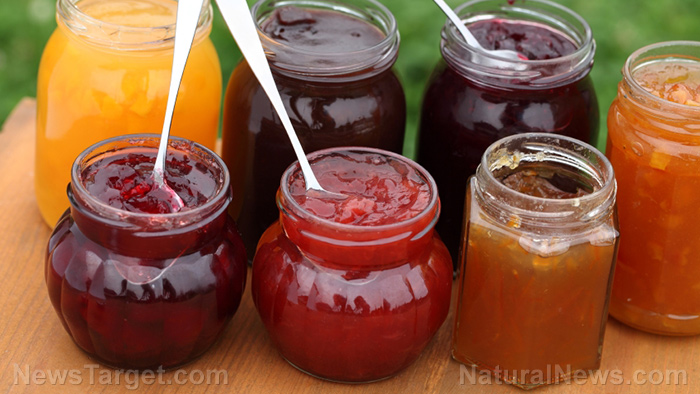Food storage tips: How to prep for life without a fridge
06/04/2020 / By Arsenio Toledo

Living without refrigeration might be a nightmare to think about, especially if you have a lot of perishable goods. However, this is exactly the kind of SHTF scenario that preppers need to be ready for, because one day the lights might go out, and if you aren’t ready for it, all your food might just go to waste. If you don’t want your family to suddenly starve and have to resort to scavenging for food, you need to prepare for life without refrigeration. Here are three ways that you can do that.
Stock up on foods that don’t require refrigeration
One of the easiest things you can do to prepare for the possibility of blackouts is to make some drastic changes to your weekly shopping list. This will help you stockpile foods that don’t perish easily, such as dried goods and canned foods. Some of the foods that you can buy will include:
- Pastas
- Nuts
- Beans and lentils
- Cereals
- Rice
- Canned soups and vegetables
- Honey
- Meals, Ready-to-Eat (MRE)
Additionally, there are plenty of fruits and vegetables that you can buy that don’t need to be refrigerated and have long shelf lives, such as tomatoes, citrus fruits and onions. Having even a small garden in your land can further supplement your supply of fresh fruits and vegetables. However, if you don’t have a garden, you can simply visit a nearby farmer’s market for fresh and organic produce.
When you are doing an inventory of all your foods, consume the food items that are closest to their expiration date. Don’t forget that you need to replace anything you take out of your emergency storage.
Raise livestock
If you have the land and are willing to invest both the resources and time into it, you should consider raising livestock, such as chickens, which are a great place to start if you have never raised livestock before. Chickens are relatively inexpensive, easy to care for and can reproduce quickly. If you raise them properly, you should be able to have a steady supply of both eggs and chicken meat. If you have a garden, the chickens can also act as fertilizing machines and pest control.
Freshly laid and unwashed eggs do not need to be refrigerated. However, they should be stored at room temperature, away from sunlight, and consumed within several weeks after hatching. To extend their shelf life, coat them in mineral oil and store away from both sunlight and extreme temperatures.
Other livestock you can raise, provided you have enough experience for them, are rabbits, goats, cows and pigs. (Related: Reduce the amount of labor needed in your homestead by turning to “multipurpose” livestock.)
Consider alternative preservation methods
Cooling with a refrigerator is not the only way to keep your foods fresh. There are alternative cooling methods that you can consider, such as mini fridges and cool boxes. If you can invest in them, a spring house or a root cellar might also be a viable replacement for your refrigerator. Both spring houses and root cellars keep the temperature within their walls low, allowing foods stored within them to last longer.
There are also different methods of preservation that you can look into. The shelf life of fruits, vegetables and raw meats can be extended through canning, dehydrating, salting, smoking and other food preservation methods.
For more tips and tricks on how to store and preserve your healthy and nutritious foods, check out the articles at FoodStorage.news.
Sources include:
Tagged Under: bug out, chickens, Food Preservation, Food storage, home gardening, homesteading, livestock, non-perishable food, off grid, preparedness, prepper, prepping, refrigeration, root cellar, SHTF, spring house, survival
RECENT NEWS & ARTICLES
EmergencyFood.News is a fact-based public education website published by Emergency Food News Features, LLC.
All content copyright © 2018 by Emergency Food News Features, LLC.
Contact Us with Tips or Corrections
All trademarks, registered trademarks and servicemarks mentioned on this site are the property of their respective owners.

















